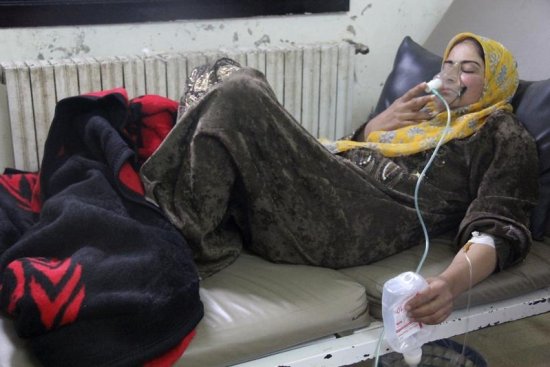
Opposition groups accuse the Bashar Assad regime of directing several deadly gas attacks at civilians this month. This comes despite a deal struck late last year to remove all chemical weapons from Syria
Several alleged gas attacks on Syrian opposition groups this month have raised fears that forces loyal to embattled President Bashar Assad are continuing to use chemical weapons.
On Tuesday, opposition groups uploaded videos of people choking and convulsing after a substance rebels say is chlorine gas was fired on civilians. One boy died in a hospital near the Turkish border despite receiving treatment, The Daily Telegraph reports.
“We have indications of the use of a toxic industrial chemical — probably chlorine — in Syria this month in the opposition-dominated village of Kfar Zeita,” State Department spokeswoman Jen Psaki said Tuesday.
“We’re examining allegations that the government was responsible. We take all allegations of the use of chemicals in combat use very seriously.”
Government officials from France and the U.K., have also said that there are strong “indications” that the Syrian government is using gas against civilians. Rebels say that helicopters have dropped bombs with chlorine canisters in several attacks since April 11.
Psaki stressed that no loophole in the in the international deal to remove Syria’s chemical weapons would allow chlorine to be deployed on the battlefield, despite the substance not being specifically listed on the agreement. The deal was struck after a sarin gas attack on civilians in August 2013.
“[The deal] prohibits the use of any toxic chemical, including chlorine, with the intent to kill or incapacitate people, regardless of whether it’s specifically listed or not in the schedule of chemicals,” she said. “The use of any toxic chemical with the intent to cause death or harm is a clear violation of the convention.”
On Tuesday, the Organization for the Prohibition of Chemical Weapons (OPCW) said the Assad regime had handed over more than 86% of its chemical weapons stockpiles, including 88.7% of all Priority 1 chemicals.